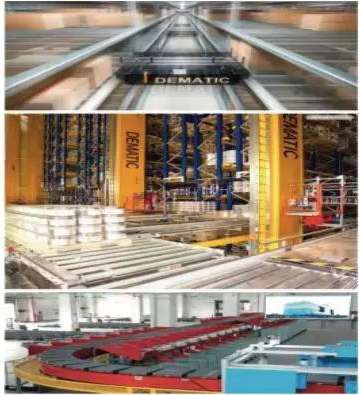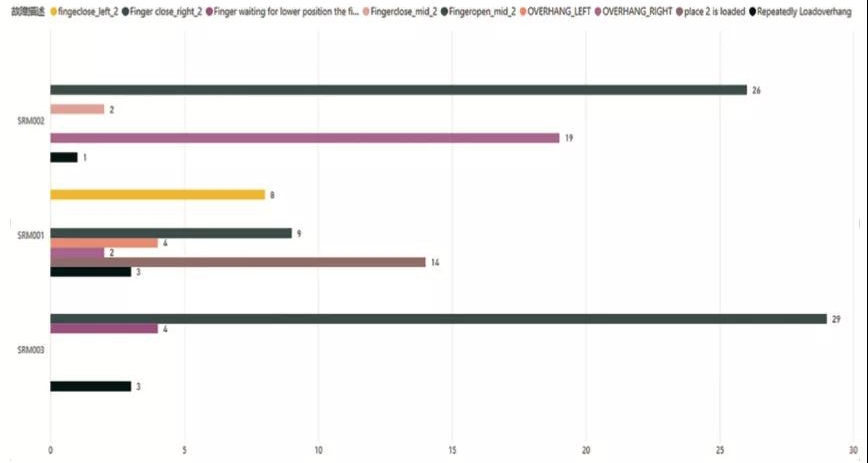Operation and maintenance management of automated storage equipment
In the process of equipment operation and maintenance management, the whole process of equipment operation and maintenance is analyzed from the overall perspective. Equipment operation and maintenance management needs to combine daily maintenance, equipment improvement, maintenance inspection, training physical fitness, spare parts management, safety management, etc., and overall control equipment management system, so that equipment management forms a closed loop.

1. Equipment status data analysis
Daily operation and maintenance should pay attention to detailed and real record operation and maintenance events, and quickly check device details, maintenance logs, spare parts replacement records, equipment knowledge base and even real-time status parameters of equipment. One of the important outputs of daily operation and maintenance is the analysis of equipment status data, providing data support for subsequent equipment improvement, maintenance inspection benchmarks, and spare parts management.
Through the SCADA data acquisition and monitoring control system, maintenance work order system, group observation and other means to collect the basic data of the equipment, master the first-hand information of the equipment status, laying the foundation for the subsequent operation and maintenance. Figure 7 is a summary of the work order system to determine the monthly fault distribution. The equipment data is analyzed regularly, the equipment stability is judged by the mean time between failures (MTBF), and the personnel training direction is judged by the mean repair time (MTTR).

2. Improve event analysis methods
Based on the equipment fault distribution data, the maintenance time and maintenance frequency are taken as the dimensions to select the direction of improvement. After the improvement event is selected, you can use the 8D analysis method to deal with it.
To output equipment failure summary, equipment improvement final plan, equipment maintenance inspection benchmark update, equipment personnel training data update, spare parts safety inventory update, implement equipment training.
The improvement incidents should be carried out continuously, in groups, to improve teamwork, increase team success, and focus on internal sharing among team members. The equipment maintenance work is gradually turned to equipment improvement, preventive equipment maintenance work, and the goal of equipment management is from equipment repair to support equipment stability.
3. Training plan
With the rapid development of automated logistics, enterprises have experienced the phenomenon of “equipment and other people” in the daily operation and maintenance process. The reasons are as follows: (1) The industry is developing rapidly, and the personnel reserves cannot keep up; (2) The operation and maintenance personnel have high circulation and operation and maintenance. Experience cannot be passed on. The purpose of the training is mainly to enable the personnel who manage and use the equipment not only to have sufficient knowledge of the equipment, but also to be fully qualified for the work undertaken, to ensure the safe and reliable operation of the equipment, and to cultivate their own “green training team” for the development of the enterprise.
The training content mainly includes theoretical training and equipment operation rules such as equipment structure, working principle, control technology, on-site operation, equipment maintenance and repair work, equipment installation and commissioning, equipment operation parameter adjustment, equipment troubleshooting, accident emergency measures, etc.
The contents of OPL can be divided into:
a. Basic knowledge. Such as equipment operation manual, basic principles and structure, safety knowledge, etc.
b. Problem case articles. Such as summary reports of specific issues, response measures, etc.
c. Improve the implementation. Such as equipment improvement results sharing, equipment improvement experience and lessons.
Equipment training should pay attention to the internal sharing of the team, form a training mechanism, establish a fault tree for equipment maintenance, pay attention to the teaching of equipment experience, accelerate the growth of new employees, improve the skills of employees, expand the coverage of employees' business skills, and ensure the development of employees' skills in both horizontal and vertical directions. .
Reprinted from the network


